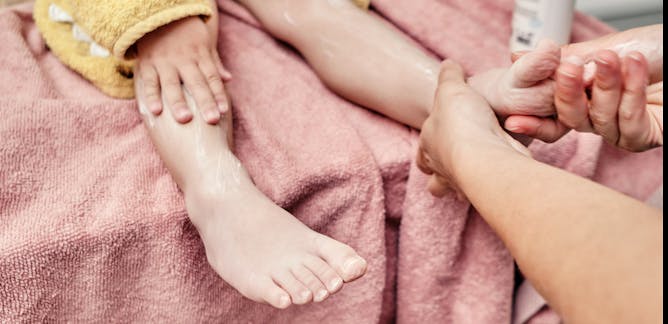
Articles on Bacteria
Displaying 1 - 20 of 370 articles

From synthetic fabrics to car exhaust to wildfires, exposure to environmental pollutants push the skin microbiome to adapt in ways that reduce its ability to protect the skin.

Gym equipment has multiple surfaces, nooks and crannies – all of which come into contact with many unwashed hands and sweaty bodies

There are many ways to kill microbes that cause dangerous infections. Combining genetic screening with machine learning can help researchers identify new antimicrobials.

If leftovers aren’t saved and reheated properly, it could put you at risk of food poisoning.

Your skin heals from cuts and scrapes on its own − what if concrete could do that too?

Yes, you need to wash them but no, you don’t need to use micellar water to do it.

Computer analysis of the genomes of extremophiles — organisms that live in extreme environments — reveals that their living conditions are recorded in their DNA.

The Nobel Prize-winning Luria−Delbrück experiment showed that random mutations in bacteria can allow them to develop resistance by chance.

New research suggests the gut bacteria of red and grey squirrels differ significantly, potentially explaining the decline of the native red and the success of its grey counterpart.

Chronic UTIs come back repeatedly or never fully go away despite treatment.

The organisms living in your gut microbiome can influence your mental and physical health. Researchers have developed a way to better test for those biological effects.

The science of smell is an exciting area of research.

New technology could unlock the soil-enriching nitrogen-fixing ability of legumes…and one day apply this to other crops too.

Your mouth and your gut is full of them. But we don’t know if they’re friend or foe.

Much like our gut microbes, the community of microbes used to process human waste must be healthy to do the job well. Monitoring the DNA in waste sludge can help us ensure the system stays healthy.

Keeping wounds clean and infection free has challenged people for thousands of years.

While every week or two will generally suffice for sheets, towels are best washed every few days. A microbiologist explains.

Zosurabalpin is highly effective against dangerous bacterium Crab, which can kill up to 60% of people infected with it.

The current treatments for inflammatory bowel disease do not work for everyone. Tapping into new areas of biology may be the key to developing new therapies.

Probiotics are great for your gut, but which sources contain the most beneficial bacteria? Newly developed sensors are helping scientists figure it out.
